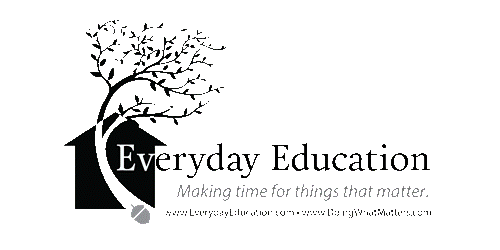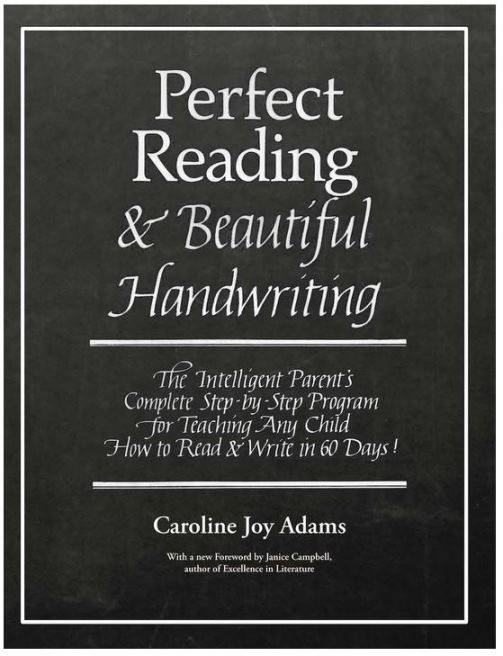Handwriting is becoming a lost art. Many schools today are forgoing the teaching of cursive writing to students, even though there are numerous benefits as to why it should still be taught. Not only is it a faster and more fluid way of writing, but it also encourages brain development and removes the confusion of the lowercase letters b and d, amongst other advantages.
CursiveLogic still believes in the power of penmanship. Linda Shrewsbury created this program to help a struggling adult student learn cursive. After studying the letters, she realized that they seemed to fit into four distinct categories. She thought that learning small variations of a few shapes would be easier than learning 26 individual letters. Her innovative yet intuitive method worked so well that the student caught on to forming the entire lower case alphabet in 45 minutes and was able to sign his name. From there, the CursiveLogic workbook was born. Since our review a few years ago, they have made changes to the book and created a teaching webinar which can both be found in the CursiveLogic Quick-Start Pack and also designed an adult coloring book, The Art of Cursive.
CursiveLogic is different from other handwriting curricula because it focuses on the inherent structure of the cursive alphabet, instead of relying on rote memorization. The program is designed around the following features and visual and auditory cues.
Letters Grouped By Shape -- Four foundational shapes underlie the entire lowercase alphabet. The letter formations are taught by shape group based on the initial stroke of the letter, rather than alphabetically. In this way, the natural synergy of the alphabet is captured, allowing each letter in the series to reinforce the proper formation of all the others.
Letter Strings -- All the similarly shaped letters are taught by connecting them in a string, instead of individually. Since the students are taught to connect letters from the very beginning, it helps them to internalize the flow of cursive handwriting even before they have learned all 26 letters.
Theme Colors -- Each letter string has a theme color that helps the student remember the shape.
Verbal Task Analysis -- Students learn a simple, rhythmical chant that describes the path of the writing instrument as the letter shapes are formed. The process of verbally describing a motor task while performing it aids the acquisition of new motor skills.
Letter Strings -- All the similarly shaped letters are taught by connecting them in a string, instead of individually. Since the students are taught to connect letters from the very beginning, it helps them to internalize the flow of cursive handwriting even before they have learned all 26 letters.
Theme Colors -- Each letter string has a theme color that helps the student remember the shape.
Verbal Task Analysis -- Students learn a simple, rhythmical chant that describes the path of the writing instrument as the letter shapes are formed. The process of verbally describing a motor task while performing it aids the acquisition of new motor skills.
The workbook is spiral-bound at the top so it never interferes with the student's hand and making it the best option for both right- and left-handed students. The beginning is filled with proper writing guidelines and tips, beginning exercises, and teaching notes. There are step-by-step directions throughout the book and occasional helps in colored boxed. The plain format ensures that the student is not distracted and able to better focus on the task. The lessons work through the entire lower case alphabet before moving on to the upper case.
The webinar, given by Prisca LeCroy (Linda's daughter and co-founder of the company), teaches the CursiveLogic method in detail. This course is a nearly 50 minutes long and is filled with step-by-step guides through the program, from the method itself to why it works to how to teach it. There are different kind of learners, so if you're one who understands better when you see something in action as opposed to reading about it, this webinar would be a great resource.
Art of Cursive is an adult coloring book. It is not an alternative to the workbook and does not replace proper instruction. However, it does have four quick lessons--one to cover each shape--and then incorporates those throughout the pictures. There are individual letter strings, double letters repeated, and even whole words hidden in the 27 drawings. The pages are thick and hold up to markers and pens. The book is designed for an adult or anyone who has previously learned cursive writing.
I've used the CursiveLogic method with my first two kids, so it was the obvious choice to use with my third. I do appreciate the changes made from the first edition, which make the workbook easier to use and more streamlined. This was my 8-year-old's first experience with cursive. He was apprehensive to start, to say the least. I showed him the individual cursive letters (found on page 10) and covered the first stroke of each letter. Most of them he could figure out because they look so similar to print. Seeing the letters individually like that gave him the confidence he needed. He immediately was able to read whole words in cursive and was eager to learn to write it, as well.
He did very well writing the first letter group shape, but started to struggle as we moved on. He naturally wants to start many of the other shapes in the same way. The CursiveLogic method is to write letter strings as opposed to individual letters, but I found that if I had him write some of those letters by themselves to fully master them, he did much better. If he started the string incorrectly, he wrote the entire thing incorrectly. He really just needed practice with that first letter or two. I know that they don't want to teach the letters by themselves, but I think it would be beneficial to have a dry-erase page in the back of the book with the others that is just the individual letters.
He is requiring a bit more practice than what is given in the book, and that's ok. He's writing well and able to read just about anything in cursive now. More importantly though, he is eager and willing to keep learning. CursiveLogic is designed in a way that does not discourage or overwhelm him.
The webinar, given by Prisca LeCroy (Linda's daughter and co-founder of the company), teaches the CursiveLogic method in detail. This course is a nearly 50 minutes long and is filled with step-by-step guides through the program, from the method itself to why it works to how to teach it. There are different kind of learners, so if you're one who understands better when you see something in action as opposed to reading about it, this webinar would be a great resource.
Art of Cursive is an adult coloring book. It is not an alternative to the workbook and does not replace proper instruction. However, it does have four quick lessons--one to cover each shape--and then incorporates those throughout the pictures. There are individual letter strings, double letters repeated, and even whole words hidden in the 27 drawings. The pages are thick and hold up to markers and pens. The book is designed for an adult or anyone who has previously learned cursive writing.
I've used the CursiveLogic method with my first two kids, so it was the obvious choice to use with my third. I do appreciate the changes made from the first edition, which make the workbook easier to use and more streamlined. This was my 8-year-old's first experience with cursive. He was apprehensive to start, to say the least. I showed him the individual cursive letters (found on page 10) and covered the first stroke of each letter. Most of them he could figure out because they look so similar to print. Seeing the letters individually like that gave him the confidence he needed. He immediately was able to read whole words in cursive and was eager to learn to write it, as well.
He did very well writing the first letter group shape, but started to struggle as we moved on. He naturally wants to start many of the other shapes in the same way. The CursiveLogic method is to write letter strings as opposed to individual letters, but I found that if I had him write some of those letters by themselves to fully master them, he did much better. If he started the string incorrectly, he wrote the entire thing incorrectly. He really just needed practice with that first letter or two. I know that they don't want to teach the letters by themselves, but I think it would be beneficial to have a dry-erase page in the back of the book with the others that is just the individual letters.
He is requiring a bit more practice than what is given in the book, and that's ok. He's writing well and able to read just about anything in cursive now. More importantly though, he is eager and willing to keep learning. CursiveLogic is designed in a way that does not discourage or overwhelm him.
Now through the end of March, you can receive a 20% discount off the Quick-Start Pack (webinar and workbook combo) with code CREW2018. If you have a struggling writer, this might be the program for you.
If you'd like to see how this program worked for other homschool families, please read more reviews on the Homeschool Review Crew blog.






















